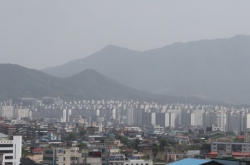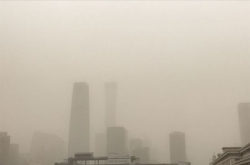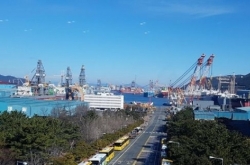The coastal city of Ulsan, 60 kilometers north of Busan, is susceptible to toxic fine dust all-year-round due to the city’s shipbuilding industrial region, research showed Wednesday.
Ulsan’s volatile organic compound emission volume is the highest among cities in Korea, according to a study led by Choi Sung-deuk, professor of urban and environmental engineering at Ulsan National Institute of Science and Technology.
The city’s toxic fine dust levels stay unchanged throughout the year due to the shipbuilding complex’s emission of VOCs that turn toxic in the air, requiring an in-depth study of the region’s air pollution.
 |
Ulsan (Yonhap) |
The air pollution level in Korea tends to go up in spring, when the seasonal wind from China carries in the yellow dust from Gobi Desert.
Choi’s research team took air samples from the UNIST campus each season and analyzed its polycyclic aromatic hydrocarbons concentration. PAHs are toxic substance created in the process of incomplete combustion of organic matter.
The research revealed that Ulsan’s PAHs density was above the national average even during summer, when fine dust levels are believed to recede elsewhere in Korea.
Choi claimed that the higher PAHs density level was due to the pollutants from Ulsan’s coastal shipbuilding industrial area that produced toxic contaminants which were trapped inland by the wind blowing in from the sea.
Choi said that the country’s analysis methods for fine dust concentration is misguided. Korea focuses on the volume of fine dust in comprehending its ill effects, while in fact, ‘high concentration’ of fine dust based on the current standard may be a collection of relatively clean sand particles. In addition, the ‘lower concentration’ result could contain a higher density of toxic substance that is more hazardous to human system.
According to Choi’s study, the PAHs level increased in Ulsan in both winter, between January and February, and in spring, between March and May. In summer, between June and August, the total mass of fine dust decreased but the PAHs density remained unchanged.
Choi’s research was published in the May issue of international journal Environmental Pollution.
By Lim Jeong-yeo (
kaylalim@heraldcorp.com)












